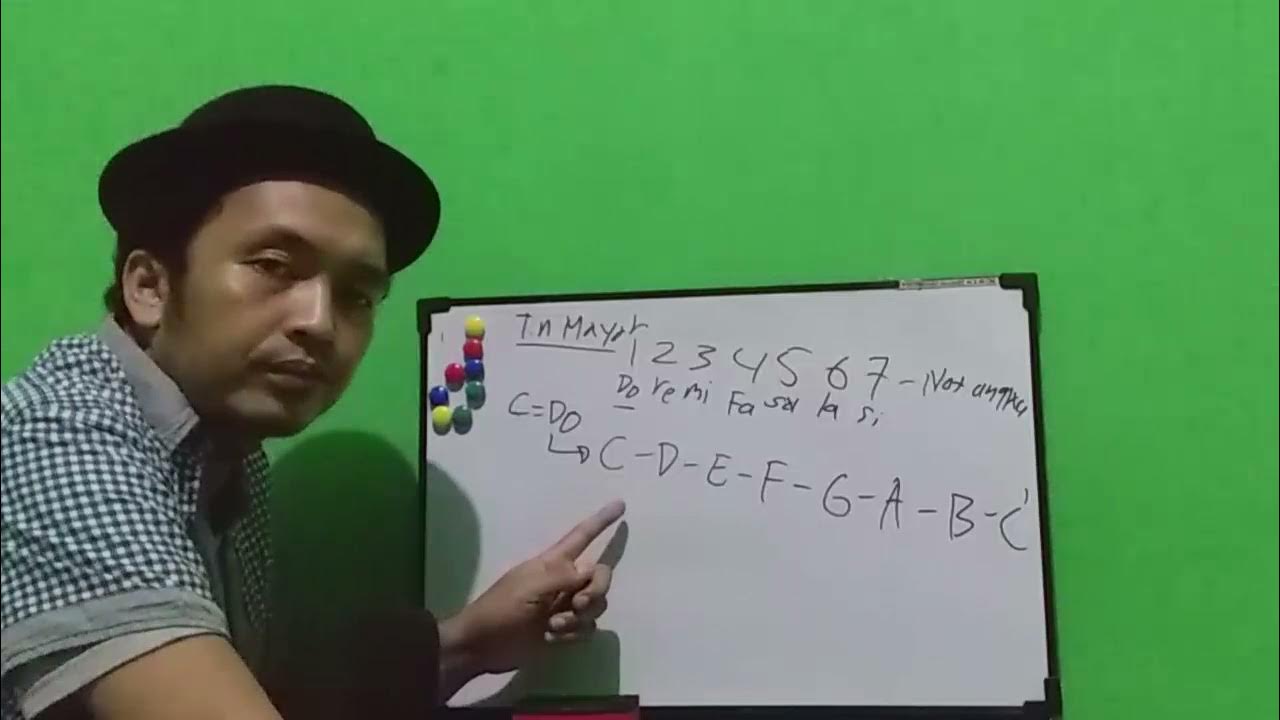Dur-Tonleitern - Einfach erklärt: Ohne Vorwissen (lange Version)
Summary
TLDRThis video serves as a comprehensive guide to writing major scales in music, specifically targeting beginners. It focuses on the D major scale, explaining how to identify the root note and use the G clef to find notes. The tutorial emphasizes the importance of counting whole and half steps, demonstrating how to apply accidentals (sharps and flats) to ensure the correct scale structure. It also introduces the A♭ major scale, following a similar process. With clear instructions and visual aids, the video is designed to help viewers grasp essential music theory concepts and confidently write major scales.
Takeaways
- 🎶 Welcome to a detailed video on how to write major scales, aimed at beginners without prior music knowledge.
- 📜 The D major scale serves as the primary example for demonstrating the scale-writing process.
- 🎹 Identifying the root note is crucial; for the D major scale, the root note is D.
- 🔑 Familiarize yourself with the G clef, where the second line from the bottom represents the note G.
- 🔠 Use the ABC system to count notes, remembering that B is referred to as H in German: A, H, C, D, E, F, G.
- 📏 Understand half steps (the distance to the next adjacent note) and whole steps (two half steps together).
- ⚖️ In major scales, half steps should only occur between the 3rd and 4th notes, and the 7th and 8th notes.
- 🔄 Use accidentals (sharps and flats) to correct note placements and achieve the necessary interval structure.
- ✨ The process for writing other scales, such as A♭ major, follows a similar pattern of identifying root notes and applying accidentals.
- 💬 Viewers are encouraged to ask questions in the comments for further assistance and clarification.
Q & A
What is the main focus of the video?
-The video aims to explain how to write major scales, particularly targeting beginners with no prior knowledge of music theory.
How is the D major scale constructed according to the video?
-The D major scale is constructed by first identifying the root note, which is D. From there, seven additional notes are added, following the pattern of whole and half steps.
What is the significance of the G clef in reading music?
-The G clef helps identify the notes on the staff, with the note G located on the second line from the bottom, which serves as a reference point for other notes.
How does the video suggest counting notes on the keyboard?
-Notes on the keyboard can be counted using the ABC method, while remembering that B is referred to as H in German music notation.
What are the definitions of whole steps and half steps in music?
-A half step is the smallest distance between two notes on the keyboard, such as from one white key to the next adjacent black key. A whole step consists of two half steps.
How are accidentals (sharps and flats) used in writing scales?
-Accidentals are used to alter the pitch of notes. A sharp (♯) raises the pitch by a half step, while a flat (♭) lowers it by a half step. They are necessary for correcting the positioning of half steps in scales.
What is the structure of whole and half steps in a major scale?
-In a major scale, the pattern of whole and half steps is: whole, whole, half, whole, whole, whole, half. Specifically, half steps occur between the third and fourth notes and the seventh and eighth notes.
What strategy does the video recommend for marking notes on the keyboard?
-The video suggests drawing a keyboard diagram if a visual reference is not available. This helps in understanding note placement and identifying pitches while working through scales.
How does the naming of notes change when using accidentals?
-When an accidental is applied, the note name changes accordingly. For example, C becomes C♯ when a sharp is added, while D becomes D♭ when a flat is applied.
What is the key takeaway regarding the construction of scales discussed in the video?
-The key takeaway is that one should start with the root note, add seven additional notes while paying attention to the necessary accidentals, and ensure the correct placement of whole and half steps.
Outlines

Cette section est réservée aux utilisateurs payants. Améliorez votre compte pour accéder à cette section.
Améliorer maintenantMindmap

Cette section est réservée aux utilisateurs payants. Améliorez votre compte pour accéder à cette section.
Améliorer maintenantKeywords

Cette section est réservée aux utilisateurs payants. Améliorez votre compte pour accéder à cette section.
Améliorer maintenantHighlights

Cette section est réservée aux utilisateurs payants. Améliorez votre compte pour accéder à cette section.
Améliorer maintenantTranscripts

Cette section est réservée aux utilisateurs payants. Améliorez votre compte pour accéder à cette section.
Améliorer maintenantVoir Plus de Vidéos Connexes

Como Descobrir o Tom da Música (Tabela Prática e Fácil de usar)

How To Pick Up Your Guitar and JUST PLAY

TANGGA NADA MAYOR [PART 1] | SESSION PLAYER, MERAPAATT !!

Cara Mencari Tangga Nada Mayor berdasarkan Interval atau jarak Nada

CAMPO HARMÔNICO DE UMA VEZ POR TODAS

Dr. B Music Theory Lesson 1 (Circle of 5ths, Scales)
5.0 / 5 (0 votes)
